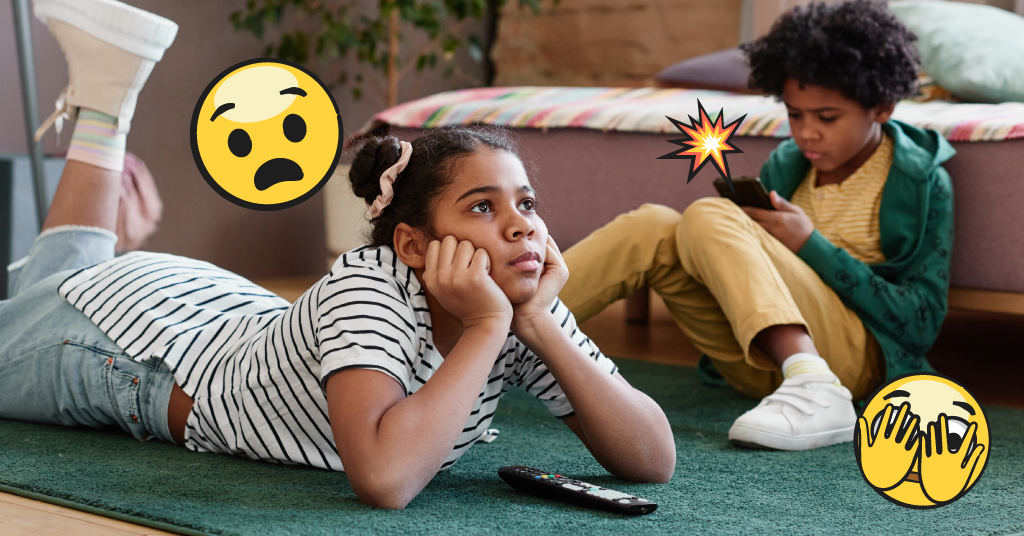
Parents, if you think about the advertising we grew up watching, it probably seems different from what our kids watch today. We remember our favorite commercials and celebrity endorsements — kids today will likely grow up to remember their favorite ‘social media influencers’, which didn’t even exist when we were young!
If your kids spend any time on Instagram, TikTok, or YouTube, there’s no doubt they’ve scrolled past an influencer or two. But they may have also come across a ‘de-influencer’, which is a new trend that’s sprung up on social media recently.
We are always looking for the latest trends that could pop up on your child’s social media feed so we can inform parents about what’s going on and what are the potential risks that come with it. So today, we’re going to explain exactly what the difference is between influencers vs. de-influencers and how your child could be impacted by it. Let’s jump in!
Influencer vs. De-Influencer: What’s the Difference?
Everyone knows that word-of-mouth is super effective when it comes to our purchasing decisions. If you have a friend that absolutely raves over a new cleaning product they bought and tells you — “See how shiny and clean my kitchen counters are! You have to try it!” — that’s pretty convincing, right? Especially if you were already thinking your kitchen counters could use some more attention.
Well, that’s exactly how online influencers work — except it’s a random person on your Instagram feed and they’re getting paid by the company to say it. The best influencers know how to come off as authentic and trusting as possible, which in turn convinces us to trust the company with our purchase.
And de-influencers work in the same yet opposite way. Instead, imagine your friend saying, “Ugh, I just spent so much money on this and it did nothing to my kitchen counters! The advertising seemed so convincing but seriously, don’t fall for it!”
De-influencers initially came about as a stand against the influencer market and the mindset that we need to have all the latest and newest things. The earliest de-influencer content was calling out this overconsumption and urged people to think more critically about their spending habits.
However, as noble as the de-influencer movement may have started, it’s unfortunately been muddled by influencers using the trend to push their products anyways. Essentially they’ll say, “Don’t get this, you don’t need it — but you can try this product instead!”
Being a Kid in the Age of Influencers
Most adults are used to the flood of marketing ploys in our feed and we know when we’re being sold something – not to say it stops us from believing it and buying that new gadget anyways — but kids can have a different experience.
If they spend a lot of time on Instagram, TikTok, or YouTube, they probably encounter influencers constantly. And we know that kids can often find comfort in these online influencers, especially when the creator makes content around your kid’s interests like music, beauty, fitness, or video games. And on top of that, sometimes the influencer is a kid themselves, which can make them even more trusting and authentic to your child. There’s a chance your kid could not even realize they are being sold something if the creator seems genuine enough.
With kids being a lot more impressionable, the risk is not just that they’ll try to buy all the things that are peddled on their feed. Kids could also pick up unhealthy or harmful messages, depending on the influencers they follow. One of these messages could be that kids believe they "need" certain things and they don't want to be caught using or wearing the "wrong" thing. This could lead to an unhealthy view of themselves if they can’t keep up with all the trends.
Kids nowadays take in a ton of content — from influencers or otherwise — so it’s crucial that kids are taught healthy digital citizenship habits, which include recognizing when a creator has a bias in whatever they are selling or pushing.
How Bark Can Help
Keeping up with your child’s social media is a daunting task, but Bark can help. Our award-winning service monitors 30+ apps and sends alerts straight to your phone if your child encounters any harmful content, such as sexual content, violent messaging, bullying, predation, and more. Start your free 7-day trial today!
Read more
Bark helps families manage and protect their children’s digital lives.





